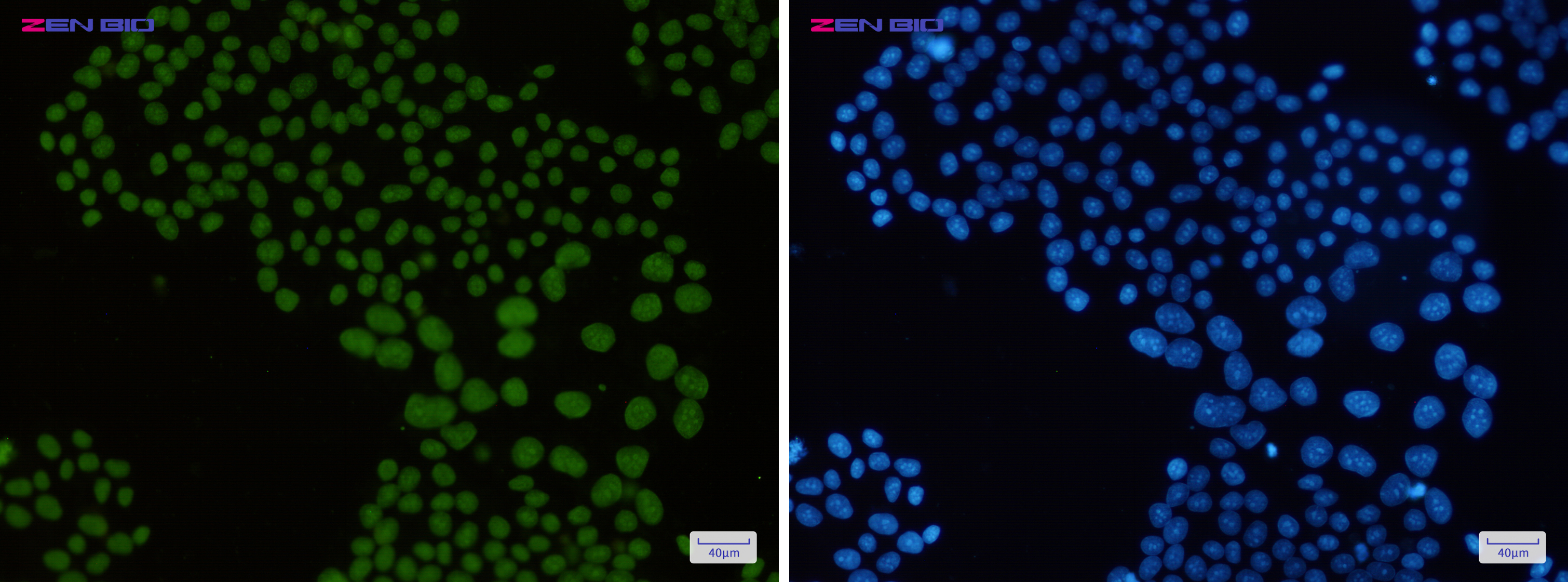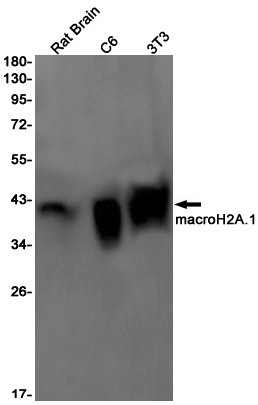-
Product Name
Anti-macroH2A.1 Rabbit antibody
- Documents
-
Description
macroH2A.1 Rabbit polyclonal antibody
-
Tested applications
WB, ICC/IF
-
Species reactivity
Human, Mouse, Rat
-
Alternative names
H2A.y; H2A/y; mH2A1; H2AF12M; MACROH2A1.1; macroH2A1.2 antibody
-
Isotype
Rabbit IgG
-
Preparation
Antigen: A synthetic peptide of human macroH2A.1
-
Clonality
Polyclonal
-
Formulation
Supplied in 50nM Tris-Glycine(pH 7.4), 0.15M Nacl, 40%Glycerol, 0.01% sodium azide and 0.05% BSA.
-
Storage instructions
Store at -20°C. Stable for 12 months from date of receipt.
-
Applications
WB: 1/2000-1/10000
ICC/IF: 1/50
-
Validations

Immunocytochemistry of macroH2A.1(green) in Hela cells using macroH2A.1 Rabbit pAb at dilution 1/50, and DAPI(blue)

Western blot detection of macroH2A.1 in Rat Brain,C6,3T3 cell lysates using macroH2A.1 Rabbit pAb(1:1000 diluted).Predicted band size:40kDa.Observed band size:40kDa.
-
Background
Swiss-Prot Acc.O75367.Variant histone H2A which replaces conventional H2A in a subset of nucleosomes where it represses transcription (PubMed:12718888, PubMed:15621527, PubMed:16428466). Nucleosomes wrap and compact DNA into chromatin, limiting DNA accessibility to the cellular machineries which require DNA as a template. Histones thereby play a central role in transcription regulation, DNA repair, DNA replication and chromosomal stability. DNA accessibility is regulated via a complex set of post-translational modifications of histones, also called histone code, and nucleosome remodeling. Involved in stable X chromosome inactivation (PubMed:15897469). Inhibits the binding of transcription factors, including NF-kappa-B, and interferes with the activity of remodeling SWI/SNF complexes (PubMed:12718888, PubMed:16428466). Inhibits histone acetylation by EP300 and recruits class I HDACs, which induces a hypoacetylated state of chromatin (PubMed:16428466, PubMed:16107708).
Related Products / Services
Please note: All products are "FOR RESEARCH USE ONLY AND ARE NOT INTENDED FOR DIAGNOSTIC OR THERAPEUTIC USE"
